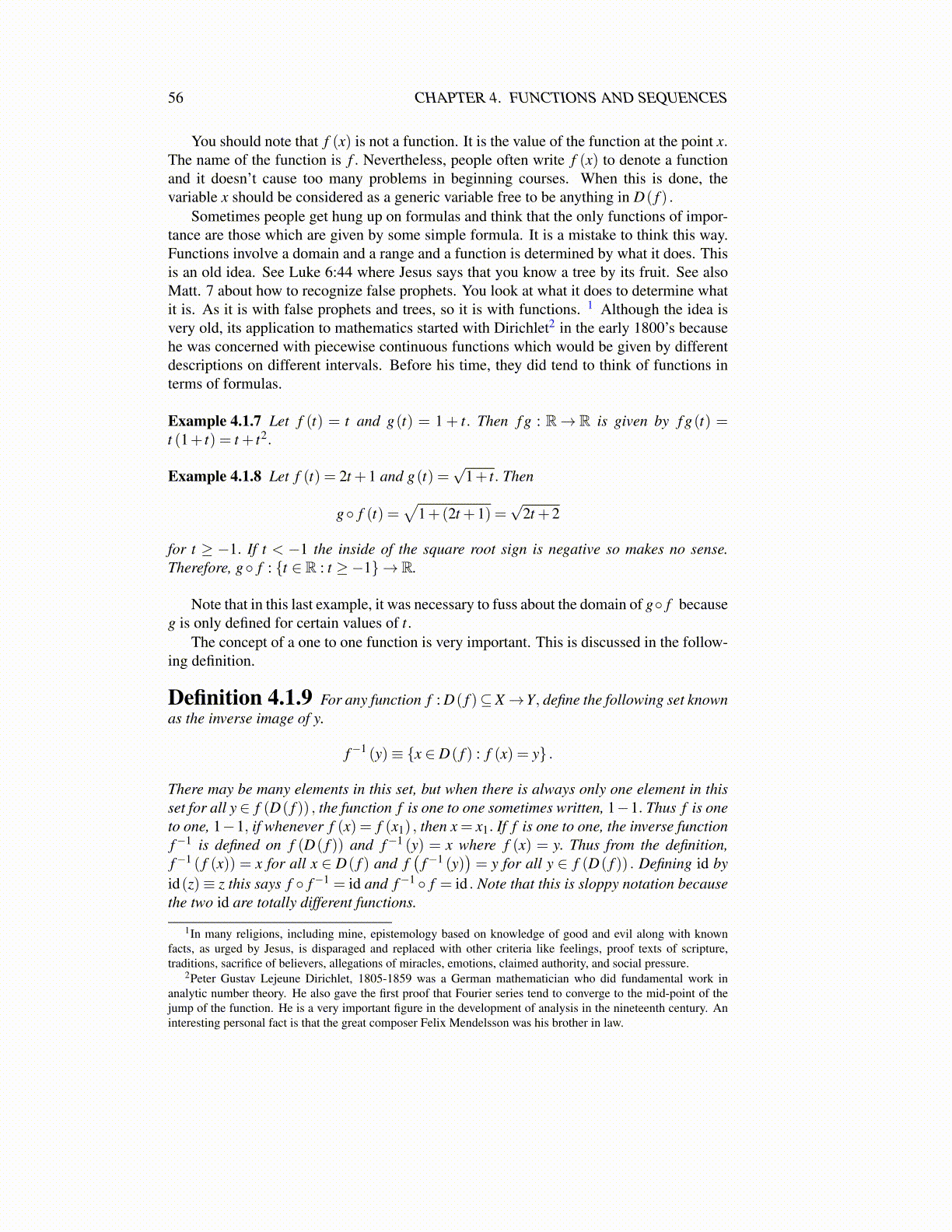
56 CHAPTER 4. FUNCTIONS AND SEQUENCES
Example 4.2.2 Let {ak}∞
k=1 be defined by ak ≡ k2 +1.
This gives a sequence. In fact, a7 = a(7) = 72 +1 = 50 just from using the formula forthe kth term of the sequence.
It is nice when sequences come in this way from a formula for the kth term. However,this is often not the case. Sometimes sequences are defined recursively. This happens, whenthe first several terms of the sequence are given and then a rule is specified which deter-mines an+1 from knowledge of a1, · · · ,an. This rule which specifies an+1 from knowledgeof ak for k ≤ n is known as a recurrence relation.
Example 4.2.3 Let a1 = 1, a2 = 1. Assuming a1, · · · ,an+1 are known, an+2 ≡ an +an+1.
Thus the first several terms of this sequence, listed in order, are 1, 1, 2, 3, 5, 8,· · · . Thisparticular sequence is called the Fibonacci sequence and is important in the study of repro-ducing rabbits. Note this defines a function without giving a formula for it. Such sequencesoccur naturally in the solution of differential equations using power series methods and inmany other situations of great importance.
For sequences, it is very important to consider something called a subsequence.
Definition 4.2.4 Let {an} be a sequence and let n1 < n2 < n3, · · · be any strictlyincreasing list of integers such that n1 is at least as large as the first number in the domainof the function. Then if bk ≡ ank , {bk} is called a subsequence of {an} . Here an is in somegiven set.
For example, suppose an =(n2 +1
). Thus a1 = 2, a3 = 10, etc. If n1 = 1,n2 = 3,n3 =
5, · · · ,nk = 2k−1, then letting bk = ank , it follows
bk =((2k−1)2 +1
)= 4k2−4k+2.
However, you might not be able to describe a subsequence by a formula as I just did.
4.3 Exercises1. Let g(t)≡
√2− t and let f (t) = 1
t . Find g◦ f . Include the domain of g◦ f .
2. Give the domains of the following functions.
(a) f (x) = x+33x−2
(b) f (x) =√
x2−4
(c) f (x) =√
4− x2
(d) f (x) =√
x 43x+5
(e) f (x) =√
x2−4x+1
3. Let f : R→ R be defined by f (t)≡ t3 +1. Is f one to one? Can you find a formulafor f−1?
4. Suppose a1 = 1,a2 = 3, and a3 = −1. Suppose also that for n ≥ 4 it is known thatan = an−1+2an−2+3an−3. Find a7. Are you able to guess a formula for the kth termof this sequence?
5. Let f : {t ∈ R : t ̸=−1}→ R be defined by f (t)≡ tt+1 . Find f−1 if possible.